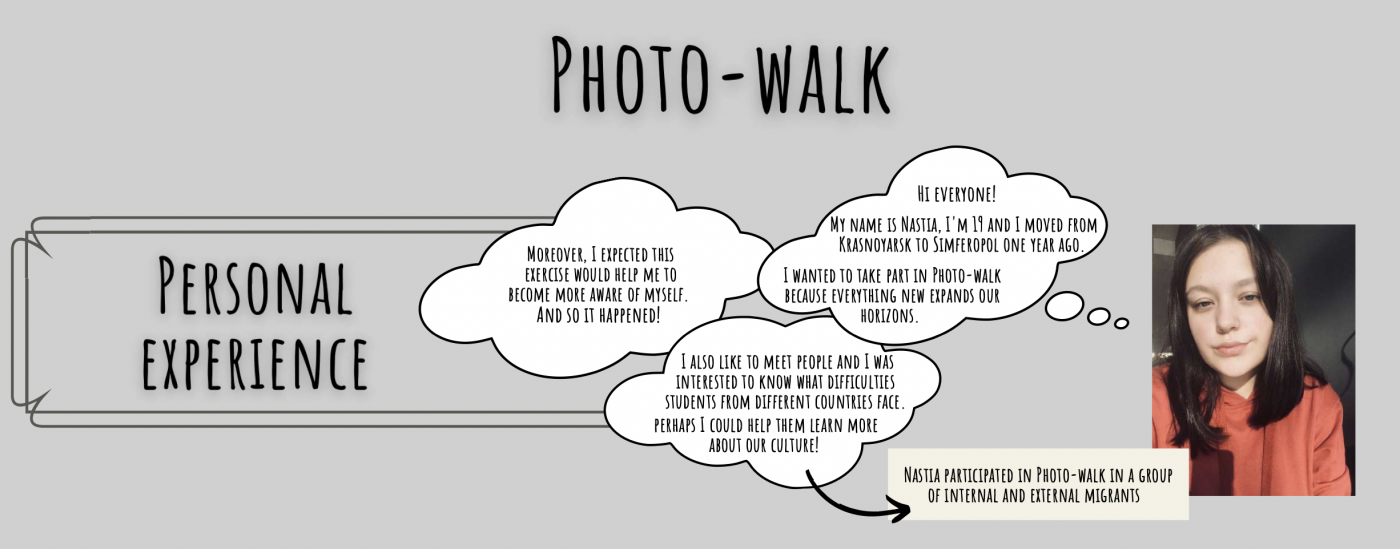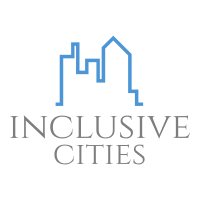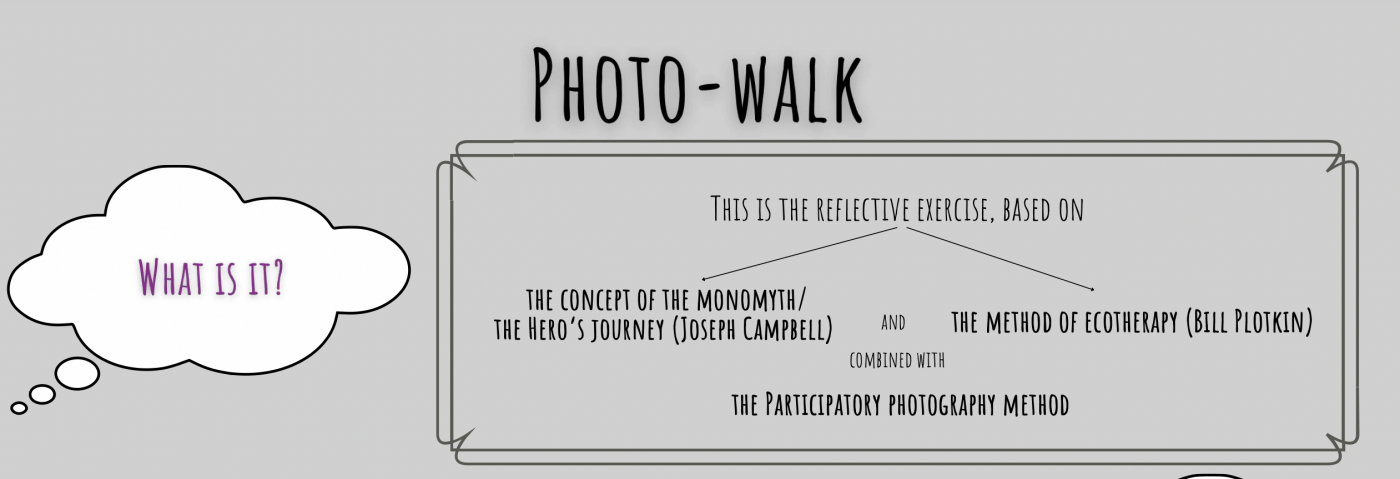This need assessment reflective tool “Photo-Walk” is created for internal and external migrants, refugees, newcomers in the city/country.

he main idea of the project is to rethink the concept of empowerment and equip professionals and learners with practical tools for creating more inclusive urban spaces and, therefore, to raise professional competences of staff working with adults at risk of exclusion (migrants). In this way, one of our primary target groups is adult learners at risk of exclusion (with migration background), for whom we want to create more inclusive urban communities.
This need assessment reflective tool “Photo-Walk” is specifically created for internal and external migrants, refugees, newcomers in the city/country.
The main aim of this reflective exercise is to help migrants to adapt to the new place for living. The tool is based on the concept of the monomyth (J. Campbell) and the method of ecotherapy (B. Plotkin), combined with the Participatory photography method.
Aims of the tool:
- to equip professional educators working with adults at risk of exclusion (migrants) with a new efficient need assessment and reflection tool;
- to introduce a unique reflective exercise to migrants, which can help them to adapt to the new living circumstances in a new place;
- to reflect on the new living circumstances in a new place and, therefore, to realize personal needs and safe spaces in the city.
Description of the tool.
This document describes and gives a specific example of the reflective exercise, the main idea of which is to help migrants to adapt to the new place for living, to its urban, social, and cultural peculiarities.
This exercise is based on the concept of the monomyth/the Hero’s Journey (Joseph Campbell) and the method of ecotherapy (Bill Plotkin), combined with the Participatory photography method.
It could be used both by trainers and facilitators to conduct this photo-walk with a group of migrants or by migrants themselves (individually) to become more aware of their needs, expectations, objectives, fears, personal treats, etc. connected to their move to the new city/country.
To accomplish this exercise, the participant has to take any camera (the quality doesn’t matter), get questions (see below), and set for a stroll. The task is to think over the proposed questions and take a photo of a place/people/event in the city, which reflects their thoughts about a concrete question – to find a photo-answer on each question and reflect on it. All the questions refer to the two different dimensions at the same time – the participant may reflect on the part of his life’s journey, he’s currently in (this is an abstract dimension), or on the concrete particular journey here and now (this is a physical dimension), or on both dimension, of course. The following questions were consequently developed according to the main stages/checkpoints of the Hero’s journey concept and adjusted to the concrete Participatory photography method, devoted to the need assessment of adaptation, inclusion, and integration into the local infrastructure, urban, social and cultural spaces. Here there are:
- Why am I here, in this city, in this place, with these people? How have I got here?
- How complicated/challenging was it to decide to start this “journey” to this city? What were the obstacles? Why did I finally make a decision and now I’m here?
- Do I have any fears, anxiety, concerns related to this city, cultural and social spaces? When has this feeling appeared? What is it about?
- When has my acquaintance with this city started? What do I expect from this “journey”? Do I have a goal (or goals) in this way? What is it?
- Am I ready to overcome the obstacles on the way to my goal? How many efforts am I ready to make?
- Are there any people next to me, who are ready to support me, to help? Are there any places in this city, where I feel safe, calm, confident, relaxed? Who are these people, what are these places?
- What knowledge and skills (or, maybe, it is more about emotions, feelings, impressions) do I want to obtain during this “journey” to this city? Or, maybe, do I want to get rid of something and to move further?
- What in this city, in these cultural and social spaces, is my biggest challenge? What is the most complicated for me?
- What do I miss in this city to feel safe, calm, confident, relaxed?
- What is there at the end of this adventure? What will happen, when I overcome all the obstacles in this city, in these new cultural and social spaces? What kind of person will I become?
If the Photo-Walk is done in a group, the facilitator finalizes it with a debriefing in the following way: participants share all the photo materials, gathered during the task completion. Then present them the poster with the Hero’s journey scheme and explain Joseph Campbell’s idea of the monomyth. Then ask all the participants to mark their position in their journey (abstract, physical, or both), as they feel it, on the poster. In this way, the facilitators and participants get the idea of everybody’s position in their personal hero’s journey and the visualization of the whole group’s position. Then make a circle and share emotions and thoughts after the exercise.
So, after exploring this document you’ll get a unique tool for working with migrants and helping them to integrate into the new urban, social and cultural conditions. Moreover, you can adjust this tool for your own needs and expand the spheres of its use.

